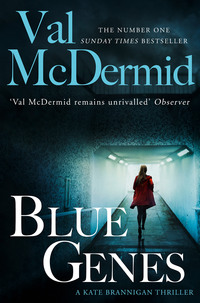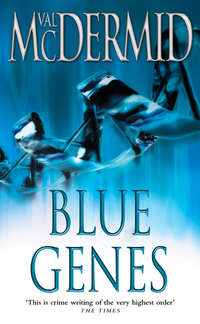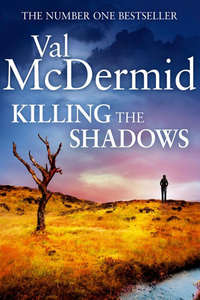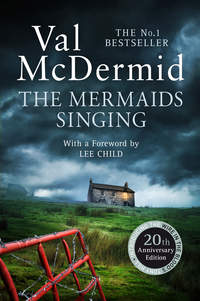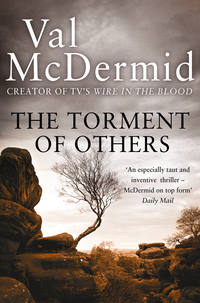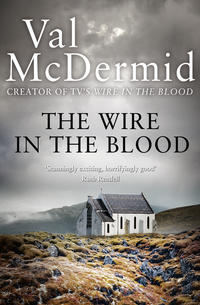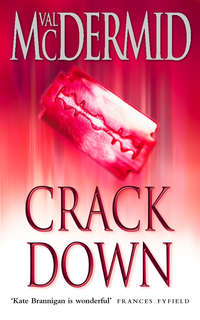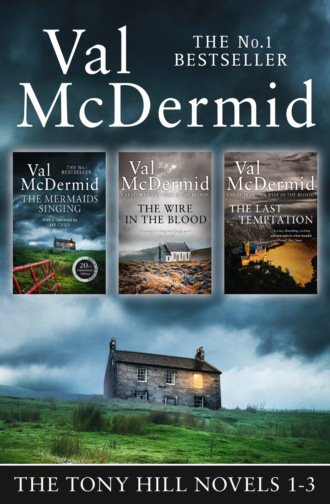
Полная версия
Val McDermid 3-Book Thriller Collection: The Mermaids Singing, The Wire in the Blood, The Last Temptation

VAL McDERMID
3–Book Thriller Collection
The Mermaids Singing
The Wire in the Blood
The Last Temptation

Copyright
Harper An imprint of HarperCollinsPublishers
HarperCollins Publishers
1 London Bridge Street
London SE1 9GF
www.harpercollins.co.uk
First published by HarperCollinsPublishers 2016
Copyright © Val McDermid 2016
Val McDermid asserts the moral right to be identified as the author of this work
Cover layout design © HarperCollinsPublishers 2016
A catalogue record for this book is available from the British Library.
This novel is entirely a work of fiction. Any references to real people, living or dead, real events, businesses, organizations and localities are intended only to give the fiction a sense of reality and authenticity. All names, characters and incidents are either the product of the author’s imagination or are used fictitiously, and their resemblance, if any, to real-life counterparts is entirely coincidental.
All rights reserved under International and Pan-American Copyright Conventions. By payment of the required fees, you have been granted the non-exclusive, non-transferable right to access and read the text of this e-book on-screen. No part of this text may be reproduced, transmitted, down-loaded, decompiled, reverse engineered, or stored in or introduced into any information storage and retrieval system, in any form or by any means, whether electronic or mechanical, now known or hereinafter invented, without the express written permission of HarperCollins.
Ebook Edition © January 2016 ISBN: 9780008108694
Version: 2015-10-08
Contents
Cover
Title Page
Copyright
The Mermaids Singing
The Wire in the Blood
The Last Temptation
About the Author
Also by Val McDermid
About the Publisher
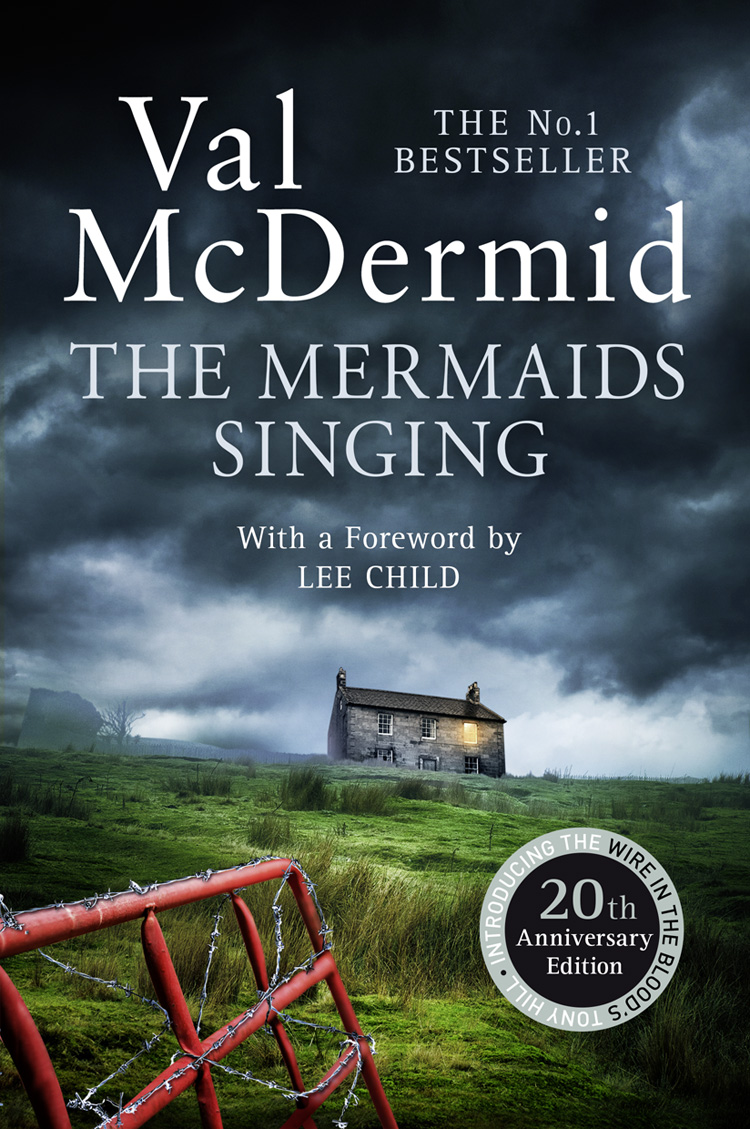
VAL McDERMID
THE MERMAIDS SINGING

Copyright
HarperCollinsPublishers
1 London Bridge Street
London SE1 9GF
www.harpercollins.co.uk
First published in Great Britain by HarperCollinsPublishers in 1995
Copyright © Val McDermid 1995
Val McDermid asserts the moral right to be identified as the author of this work
Cover layout design © HarperCollinsPublishers 2015
Cover design © MavroDesign.com
Cover photographs © Michael Trevillion/Trevillion images(house); Jonathan D. GoForth/Getty Images (red gate); Patrick Chambers (grass); Shutterstock.com (wire)
A catalogue record for this book is available from the British Library
This novel is entirely a work of fiction. The names, characters and incidents portrayed in it are the work of the author’s imagination. Any resemblance to actual persons living or dead, events or localities is entirely coincidental.
All rights reserved under International and Pan–American Copyright Conventions. By payment of the required fees, you have been granted the nonexclusive, nontransferable right to access and read the text of this e–book on–screen. No part of this text may be reproduced, transmitted, downloaded, decompiled, reverse-engineered, or stored in or introduced into any information storage and retrieval system, in any form or by any means, whether electronic or mechanical, now known or hereafter invented, without the express written permission of HarperCollins.
HarperCollinsPublishers has made every reasonable effort to ensure that any picture content and written content in this ebook has been included or removed in accordance with the contractual and technological constraints in operation at the time of publication.
Source ISBN: 9780008134761
Ebook Edition © NOVEMBER 2015 ISBN: 9780007327560
Version: 2015-10-08
An Introduction by Lee Child
This is a twentieth-anniversary edition, which means a third of my life has been shared with Val McDermid, first on the page, and then from time to time in person. More than a third, actually, because The Mermaids Singing wasn’t her first book, and anyway I’m pretty sure I read her before she wrote any books at all – once she was a journalist covering the north of England for several newspapers, and at the time part of my job at Granada Television in Manchester was to study the local press in order to keep current with the local mood and feeling. Which was lucky for me – back then there was no internet, obviously, and no organized recommendation network for readers, so to get my fiction fix I used to walk up to Waterstones on Deansgate and browse the then-chaotic but richly packed crime section, where I suppose I must have recognized her name from a newspaper byline. Local girl makes good, I suppose I thought, which was enough of a nudge to make me give her a try.
And I’m glad I did. I caught up with what I had missed, and eagerly awaited each new title thereafter. This edition rightly celebrates her first major award-winning book, but she’s far from a one-hit wonder. In fact any or all of her books could or should have won awards, because she’s remarkably consistent. As a reader I remember vaguely trying to work out how and why, and then later as a writer myself I revisited the question with greater professional urgency. I lacked the academic vocabulary and habit of mind to get deeply into it, which frustrated me, because something was happening I needed to know about: over and over again, she was making me extremely annoyed whenever I had to put her book down, to eat or talk or go to the toilet or go to work. That’s a rare and subtle art, perhaps beyond academic vocabulary anyway, but beyond precious to a reader like me.
Eventually I met her in person, and started to figure it out. She’s extremely intelligent – practically a prodigy as a youngster – but, gloriously, she feels absolutely no need to prove it all the time. Which means everything in the books serves the books, not the author. No look at me! No I did lots of research! I know things you don’t! Which gives the books a rare and self-sufficient integrity. For instance, occasionally she’s accused of being ‘bloodthirsty’, to which I say, no, she isn’t. She’s honest. Crimes are usually sordid and disgusting, and to present them otherwise is disingenuous. Everything in the books is there because it needs to be. No other reason, either good or bad. No inhibition, no pandering, no caution.
And, I learned, her upbringing was a little isolated and a little provincial, in much the same way as mine, at much the same time. As a kid I used books as a lifeline. I remember the simple ecstasy of losing myself in stories, living them, being them, and I’m absolutely certain she did the same. I’m certain she remembers the feeling. And I think her deep intellectual self-confidence now allows her to induce that same feeling in her readers. Nothing extraneous gets in the way. An academic analysis of plot or character or setting would miss the point – this is a writer still in love with reading, still in love with story, still in love with the elemental rush of immersion in a different world, and now smart enough and honest enough as an adult to keep making it all happen for others. For which I’m extremely grateful as a reader, and extremely admiring as a colleague.
Lee Child
New York 2015
Dedication
For Tookie Flystock, my beloved serial insect killer.
I have heard the mermaids singing, each to each.
I do not think that they will sing to me.
‘The Love Song of J. Alfred Prufrock’
T. S. Eliot
The soul of torture is male
Comment on exhibit card
The Museum of Criminology and Torture,
San Gimignano, Italy.
All chapter epigraphs are taken from
‘On Murder considered as one of the fine arts’
by Thomas De Quincey (1827)
Contents
Cover
Title Page
Copyright
An Introduction by Lee Child
Dedication
Epigraph
Chapter 1
Chapter 2
Chapter 3
Chapter 4
Chapter 5
Chapter 6
Chapter 7
Chapter 8
Chapter 9
Chapter 10
Chapter 11
Chapter 12
Chapter 13
Chapter 14
Chapter 15
Chapter 16
Chapter 17
Chapter 18
Epilogue
Acknowledgements
FROM 3½″ DISK LABELLED: BACKUP.007; FILE LOVE.001
You always remember the first time. Isn’t that what they say about sex? How much more true it is of murder. I will never forget a single delicious moment of that strange and exotic drama. Even though now, with the benefit of experience and hindsight, I can see it was an amateurish performance, it still has the power to thrill, though not any longer to satisfy.
Although I didn’t realize it before the decision to act was forced upon me, I had been paving the way for murder well in advance. Picture an August day in Tuscany. An air-conditioned coach whisking us from city to city. A bus-load of Northern culture vultures, desperate to fill every moment of our precious fortnight’s package with something memorable to set against Castle Howard and Chatsworth.
I’d enjoyed Florence, the churches and art galleries filled with strangely contradictory images of martyrdom and Madonnas. I had scaled the dizzy heights of Brunelleschi’s dome surmounting the immense cathedral, entranced by the winding stairway that leads up from the gallery to the tiny cupola, the worn stone steps tightly sandwiched between the ceiling of the dome and the roof itself. It was like being inside my computer, a real role-playing adventure, working my way through the maze to daylight. All it lacked were monsters to slay on the way. And then, to emerge into bright day and amazement that up here, at the end of this cramped ascent, there was a postcard and souvenir seller, a small, dark, smiling man stooped from years of lugging his wares aloft. If it had really been a game, I would have been able to purchase some magic from him. As it was, I bought more postcards than I had people to send them to.
After Florence, San Gimignano. The town rose up from the green Tuscan plain, its ruined towers thrusting into the sky like fingers clawing upwards from a grave. The guide burbled on about ‘a medieval Manhattan’, another crass comparison to add to the list we’d been force-fed since Calais.
As we neared the town, my excitement grew. All over Florence, I’d seen the advertisements for the one tourist attraction I really wanted to see. Hanging splendidly from lampposts, gorgeous in rich red and gold, the banners insisted that I visit the Museo Criminologico di San Gimignano. Consulting my phrasebook, I’d confirmed what I’d thought the small print said. A museum of criminology and torture. Needless to say, it wasn’t on our cultural itinerary.
I didn’t have to search for my target; a leaflet about the museum, complete with street plan, was thrust upon me less than a dozen yards inside the massive stone gateway set in the medieval walls. Savouring the pleasure of anticipation, I wandered around for a while, marvelling at the monuments to civic disharmony that the towers represented. Each powerful family had had its own fortified tower which they defended against their neighbours with everything from boiling lead to cannons. At the peak of the city’s prosperity, there were supposedly a couple of hundred towers. Compared to medieval San Gimignano, Saturday night down the docks after closing time seems like kindergarten, the seamen mere amateurs in mayhem.
When I could no longer resist the pull of the museum, I crossed the central piazza, tossing a bicoloured 200-lire coin in the well for luck, and walked a few yards down a side street, where the now familiar red and gold hangings adorned ancient stone walls. Excitement buzzing in me like a blood-crazed mosquito, I walked into the cool foyer and calmly bought my entrance ticket and a copy of the glossy, illustrated museum guide.
How can I begin to describe the experience? The physical reality was so much more overwhelming than photographs or videos or books had ever prepared me for. The first exhibit was a ladder rack, the accompanying card describing its function in loving detail in Italian and English. Shoulders would pop out of their sockets, hips and knees separate to the sound of rending cartilage and ligament, spines stretch out of alignment till vertebrae fell apart like beads from a broken string. ‘Victims,’ the card said laconically, ‘often measured between six and nine inches taller after the rack.’ Extraordinary minds the inquisitors had. Not satisfied with interrogating their heretics while they were alive and suffering, they had to seek further answers from their violated bodies.
The exhibition was a monument to the ingenuity of man. How could anyone not admire the minds that examined the human body so intimately that they could engineer such exquisite and finely calibrated suffering? With their relatively unsophisticated technology, those medieval brains devised systems of torture so refined that they are still in use today. It seems that the only improvement our modern post-industrial society has been able to come up with is the additional frisson provided by the application of electricity.
I moved through the rooms, savouring each and every toy, from the gross spikes of the Iron Maiden to the more subtle and elegant machinery of pears, those slender, segmented ovoids which were inserted into vagina or anus. Then, when the ratchet was turned, the segments separated and extended till the pear had metamorphosed into a strange flower, petals fringed with razor-sharp metal teeth. Then it was removed. Sometimes the victims survived, which was probably a crueller fate.
I noticed unease and horror on the faces and in the voices of some of my fellow visitors, but recognized it for the hypocrisy it was. Secretly, they were loving every minute of their pilgrimage, but respectability forbade any public display of their excitement. Only the children were honest in their ardent fascination. I would have happily bet that I was far from the only person in those cool, pastel rooms who felt the surge of sexual desire between their legs as we drank in the exhibits. I have often wondered how many holiday sexual encounters have been spiced and salted by the secret recollection of the torture museum.
Outside, in a sun-drenched courtyard, a skeleton crouched in a cage, bones clean as if stripped by vultures. Back in the days when the towers stood tall, these cages would have hung on the outer walls of San Gimignano, a message to inhabitants and strangers alike that this was a city where the law exacted a harsh penalty if it was not respected. I felt a strange kinship with those burghers. I too respect the need for punishment after betrayal.
Near the skeleton, an enormous metal-shod spoked wheel leaned against the wall. It would have looked perfectly at home in an agricultural museum. But the card fixed to the wall behind it explained a more imaginative function. Criminals were bound to the wheel. First, they were flayed w ith scourges that ripped the flesh from their bones, exposing their entrails to the eager crowd. Then, with iron bars, their bones were broken on the wheel. I found myself thinking of the tarot card, the wheel of fortune.
When I realized I was going to have to become a killer, the memory of the torture museum rose before me like a muse. I’ve always been good with my hands.
After that first time, part of me hoped I wouldn’t be forced to do it again. But I knew that if I had to, the next time it would be better. We learn from our mistakes the imperfections of our actions. And luckily, practice makes perfect.
Конец ознакомительного фрагмента.
Текст предоставлен ООО «ЛитРес».
Прочитайте эту книгу целиком, купив полную легальную версию на ЛитРес.
Безопасно оплатить книгу можно банковской картой Visa, MasterCard, Maestro, со счета мобильного телефона, с платежного терминала, в салоне МТС или Связной, через PayPal, WebMoney, Яндекс.Деньги, QIWI Кошелек, бонусными картами или другим удобным Вам способом.


